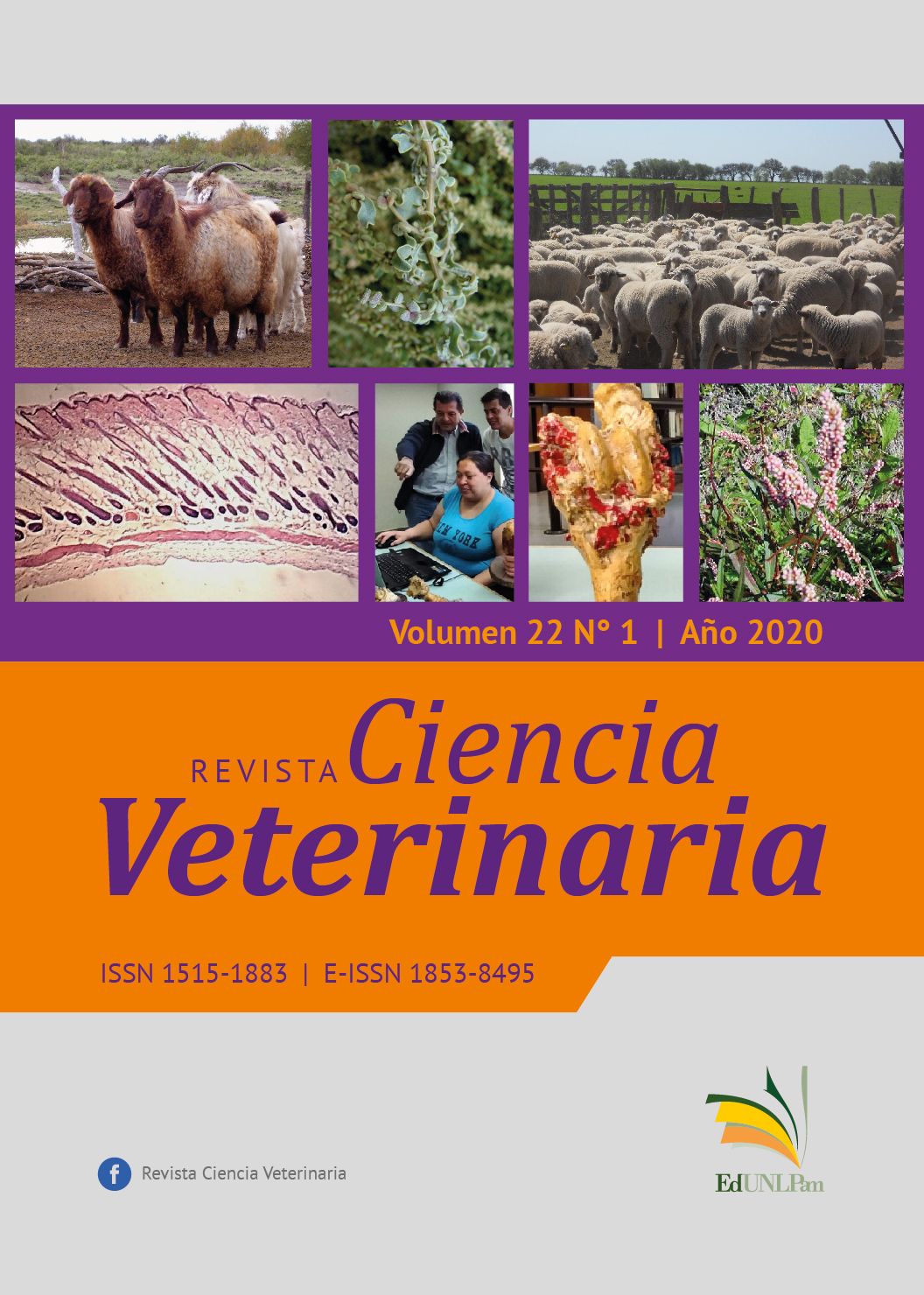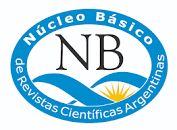Multimedial environment for the teaching of osteoarticular surgical pathologies
DOI:
https://doi.org/10.19137/cienvet-202022104Keywords:
Multimedia tool, virtual specimen, teaching-learning processAbstract
The authors inform the results of the students’ assessment of a digital multimedia which offers digital specimens with surgical pathologies of osteoarticular system of domestic animals. Specimens belonging to the collection of the subject Surgical Technique and Pathology (Faculty of Veterinay Science – National University of La Pampa) were digitalized and integrated to a digital environment. Forty-eight students who had already done the subject participated voluntarily in the experience. They explored each specimen from different angles using the mouse to freely turn and amplify the images. They then registered their impressions in a survey in which they valued the degree of similarity between the virtual specimens and the real ones, the sensibility of response of the virtual specimens to the mouse movements, the identification of lesions and the degree of difficulty in identifying them. The results were analyzed with a descriptive statistical method. The surveyed students were able to identify the osteoarticular lesions and mentioned the similarity between the virtual and real specimens. The digital multimedia was positively evaluated by the students as a valuable pedagogical tool. The authors consider that this pedagogical tool responds to the student`s interests and technological abilities, with which they are already familiar.
Downloads
References
Mayer, R.E. 2005. The Cambridge Handbook of Multimedia Learning. Cambridge University Press, Cambridge, UK.
Mayer, R.E. Anderson, R.B. 1991. Animations need narrations: an experimental test of a dual-coding hypothesis. J Ed Psychology. 83:484–490.
Galván, S.M.; Gimeno, M.; Nuviala, J.; Laborda, J.; Andreotti, C.; Sbodio, O.; Pastor, R.
Potencialidades y limitaciones del uso de recursos multimediales en la enseñanza de anatomía veterinaria. Rev. Chil. Anat. 18:75-83
Peralta, D.A.; Mariño, S.I., Sellares, M.E.; Godoy, M.V.V. 2006. Entorno Complementario al aprendizaje del “Sistema Osteológico del Equino”. I Congreso de Tecnología en Educación y Educación en Tecnología. Red de Universidades con Carreras en Informática (RedUNCI). 8 al 11 de agosto de 2006. Universidad Nacional de La Plata.
Saber, A.A. 2008. Implementing imaging facilities and multimedia in teaching veterinary anatomy. J Vet Anat. 1:48-53
Font, H.; Yanara Almaguer; Soñora, R.; Zaldivar, N.; Valdés, P. 2006. Libro multimedia para clases prácticas de anatomía patológica general. Un medio de enseñanza alternativo. Rev Elec Vet REDVET. http://www.veterinaria.org/revistas/redvet/n050506. html (fecha consulta 19 de noviembre 2017).
Sameeh, M.; Abutarbush, S.M.; Naylor, J.M.; Parchoma, G.; D’Eon, M.; Petrie, L.; Carruthers, T. 2006. Evaluation of traditional instruction versus a self-learning computer module in teaching veterinary students how to pass a nasogastric tube in the horse. JVME. 33:447-454.
Mehrabian, A.; Wiener, M. 1967. Decoding of inconsistent communications. J Pers Soc Psychol. 6:109-114.
Hidalgo Prieto, M. 2007. Importancia de las nuevas tecnologías como método de
aprendizaje dentro y fuera del aula. Res Novae Cordubenses. 4:213-226
De Hauw, S.; De Vos, A. 2010. Millennials’ career perspective and psychological contract expectations: does the recession lead to lowered expectations?. Journal of Business and Psychology, 25:293-302
Ibáñez, E.; Cuesta, M.; Tagliabue, R.; Zangaro, M. (2008). La generación actual en la
universidad: El impacto de los Millennials. V Jornadas de Sociología de la UNLP, 10, 11 y 12 de diciembre de 2008, La Plata, Argentina. En Memoria Académica. Disponible en: http://www.memoria.fahce.unlp.edu.ar/trab_eventos/ev.6146/ev.6146.pdf
Esteve, F.; Gisbert, M. 2013. Competencia digital en la educación superior: instrumentos de evaluación y nuevos entornos. Rev Ven Info, Tec Conoc. 10:29-43.
Martín-Pérez, V.; Castellano, B.; González, B. (2007). “Microscopio virtual: Prácticas
de laboratorio en casa, una experiencia en la Facultad de Medicina de la UAB” en Red
Estatal de Docencia Universitaria (REDU). Seminario Internacional 2-07: el desarrollo
de la autonomía en el aprendizaje
Poblet, E.; Moro, J.; Alfaro, L. 2013. Patología digital y docencia. Libro Blanco de la
Anatomía Patológica en España. p. 105-109.
López-Plana, C.; López-Béjar, M. 2004. Elaboración de material didáctico adaptado
al entorno web para la enseñanza y el aprendizaje de la Anatomía Veterinaria. Barcelona, Universidad Autónoma de Barcelona. Disponible en: https://www.uab.cat/
iDocument/material_veterinaria.pdf fecha de consulta 01 de Diciembre de 2017
López Pérez, F.; Cubillos Vanegas, S.; Maury, M.; Gómez, F.; Escobar, N. 2006. Evaluación de la calidad educativa en multimedios interactivos. En: Experiencias significativas en innovación pedagógica. Hernández, G.; Vargas Cardozo, F.A. eds. Universidad Nacional de Colombia. Bogotá, Colombia. Pp 206-220.
Vasan, N.S.; DeFouw, D.O.; Compton, S.A. 2009. Survey of student perceptions of
team-based learning in anatomy curriculum: favorable views unrelated to grades.
Anat. Sci. Educ. 2009; 2:150-155.
Figueroa C.; Díaz E.; Bosco C.; Rojas R.; Grabe N.; Gutiérrez S.; López J.; García A.; Harte S. 2015. Microscopia Virtual: Tecnología al Servicio de la Enseñanza de la Histología/ Embriología en Cursos de Ciencias de la Salud. Conference: TICAL 2015, 6-7 Julio, Viña del Mar, Chile. Recuperado de: https://www.researchgate.net/publication/
_Microscopia_Virtual_Tecnologia_al_Servicio_de_la_Ensenanza_de_
la_Histologia_Embriologia_en_Cursos_de_Ciencias_de_la_Salud
Downloads
Published
How to Cite
Issue
Section
License
Al momento de enviar sus contribuciones, los colaboradores deberán declarar , de manera fehaciente, que poseen el permiso del archivo o repositorio donde se obtuvieron los documentos que se anexan al trabajo, cualquiera sea su formato (manuscritos inéditos, imágenes, archivos audiovisuales, etc.), permiso que los autoriza a publicarlos y reproducirlos, liberando a la revista y sus editores de toda responsabilidad o reclamo de terceros , los autores deben adherir a la licencia Creative Commons denominada “Atribución - No Comercial CC BY-NC-SA”, mediante la cual el autor permite copiar, reproducir, distribuir, comunicar públicamente la obra y generar obras derivadas, siempre y cuando se cite y reconozca al autor original. No se permite, sin embargo, utilizar la obra con fines comerciales.









.jpg)

4.png)


7.png)



